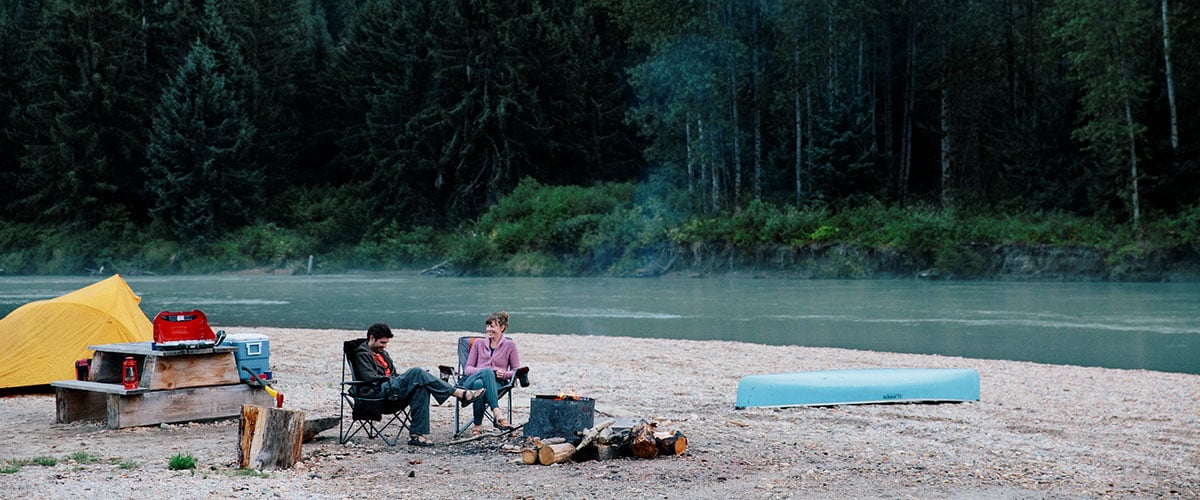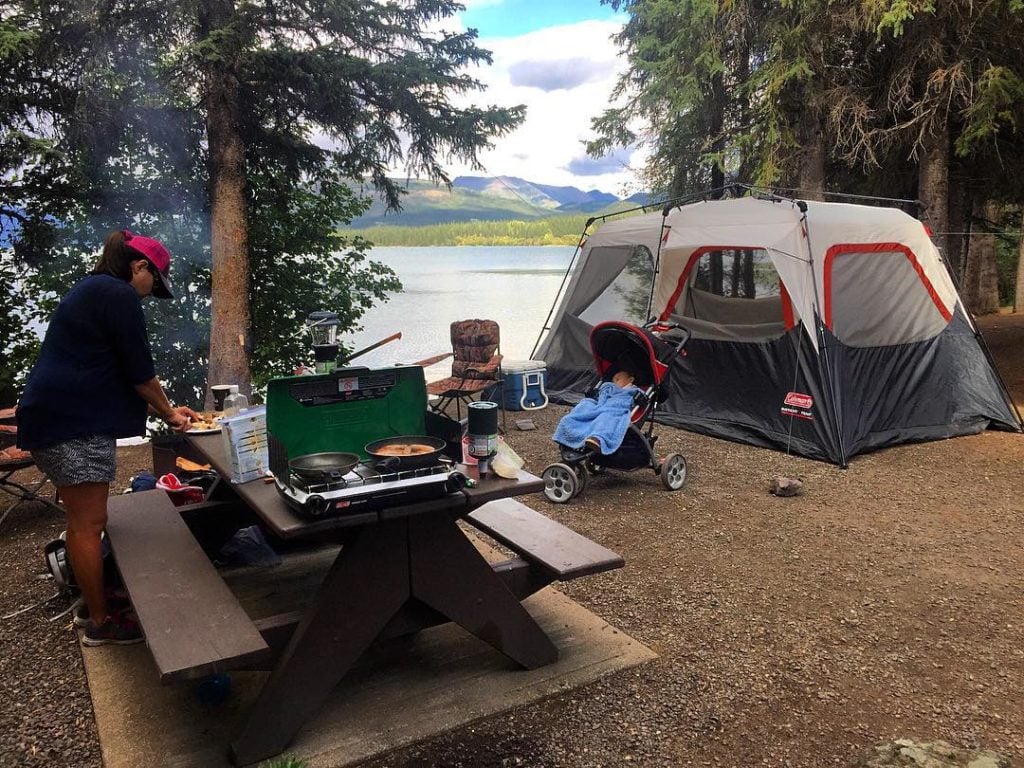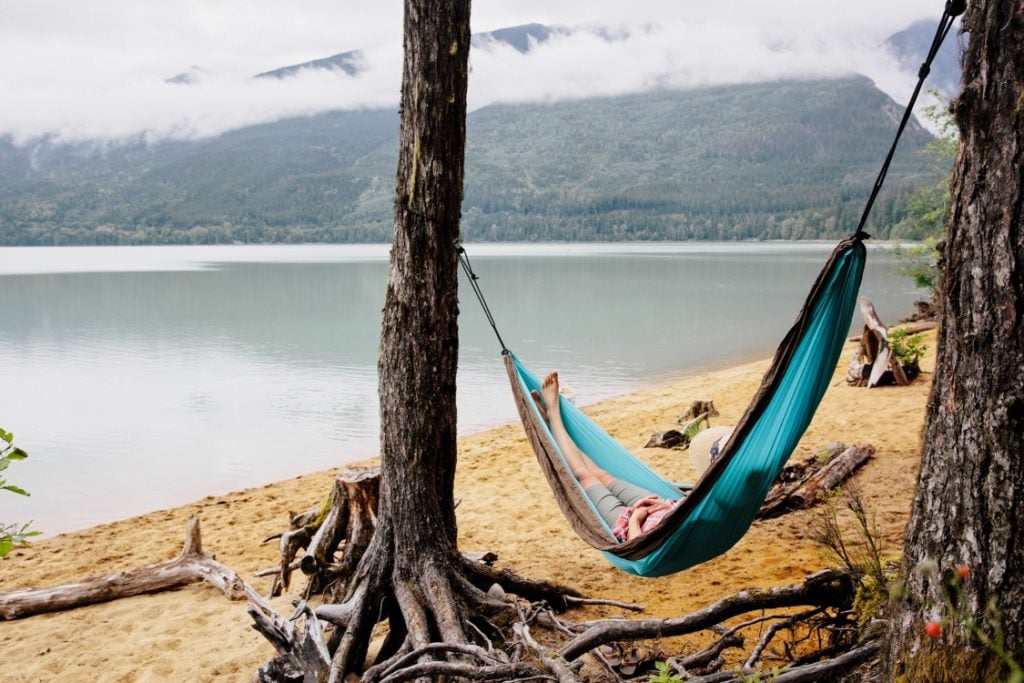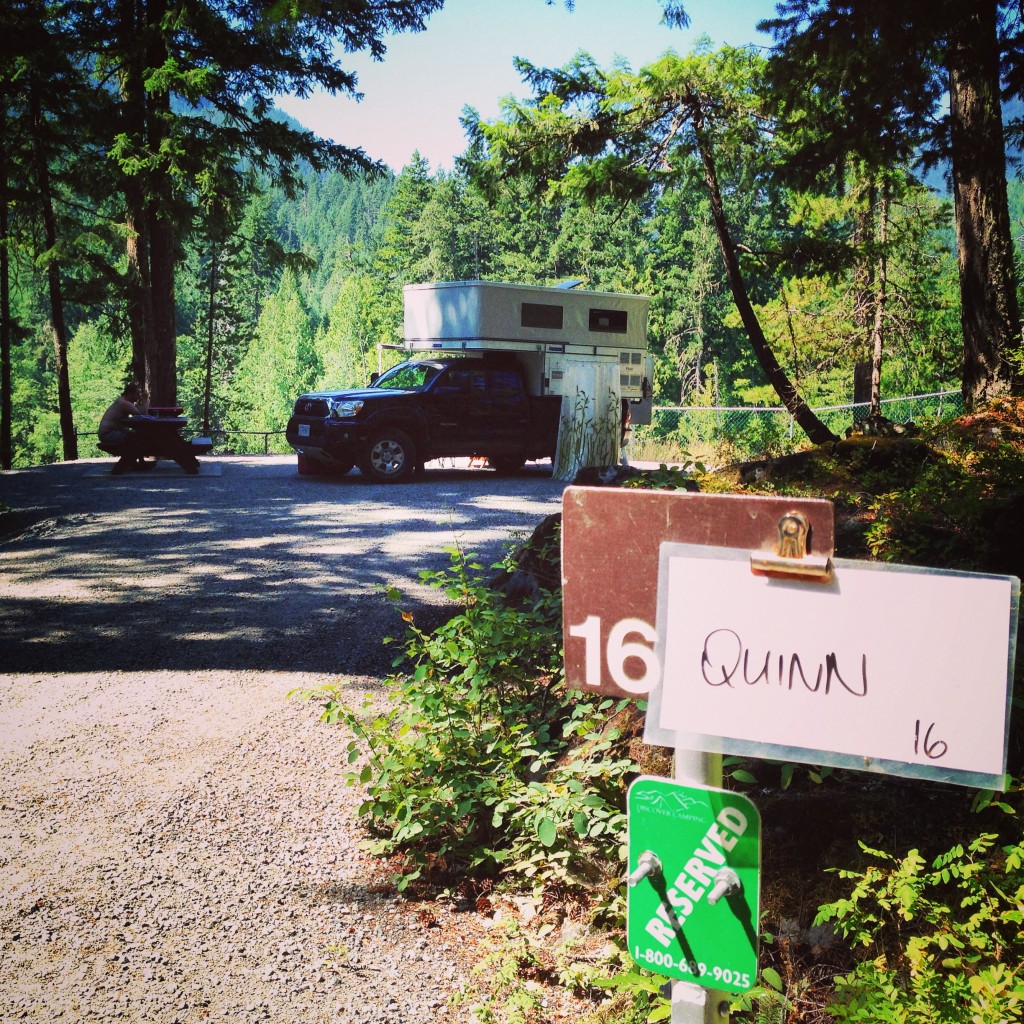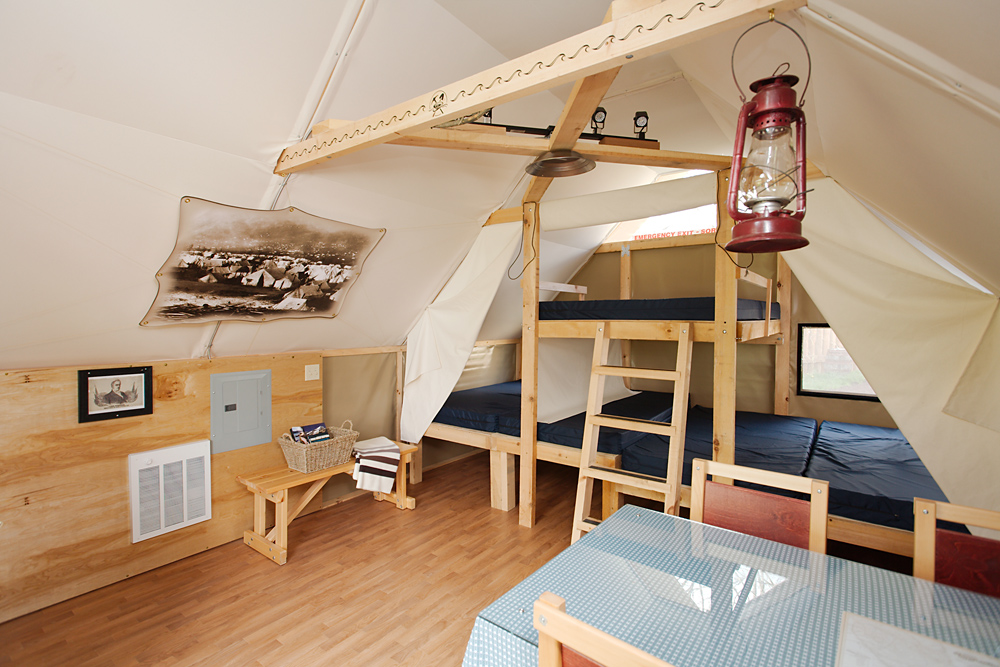Understand Camping Lingo
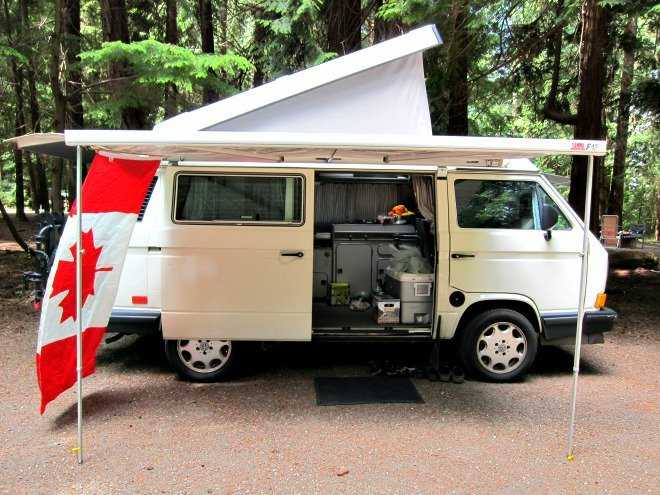
This is what you call camper van camping. Photo: @travelling_mom
frontcountry camping (a.k.a. car camping): Camping in a park or recreation area close to a road or highway. These campsites are generally accessible by vehicle and have basic facilities and recreational opportunities.
RV (camper van) camping: Camping with an RV (recreational vehicle) or camper van in a frontcountry area.
group camping: Areas set aside in provincial or national parks for large groups to camp together.
walk-in/cycle-in camping: Designated sites that do not allow vehicle parking (some frontcountry areas have walk-in/cycle-in sites).
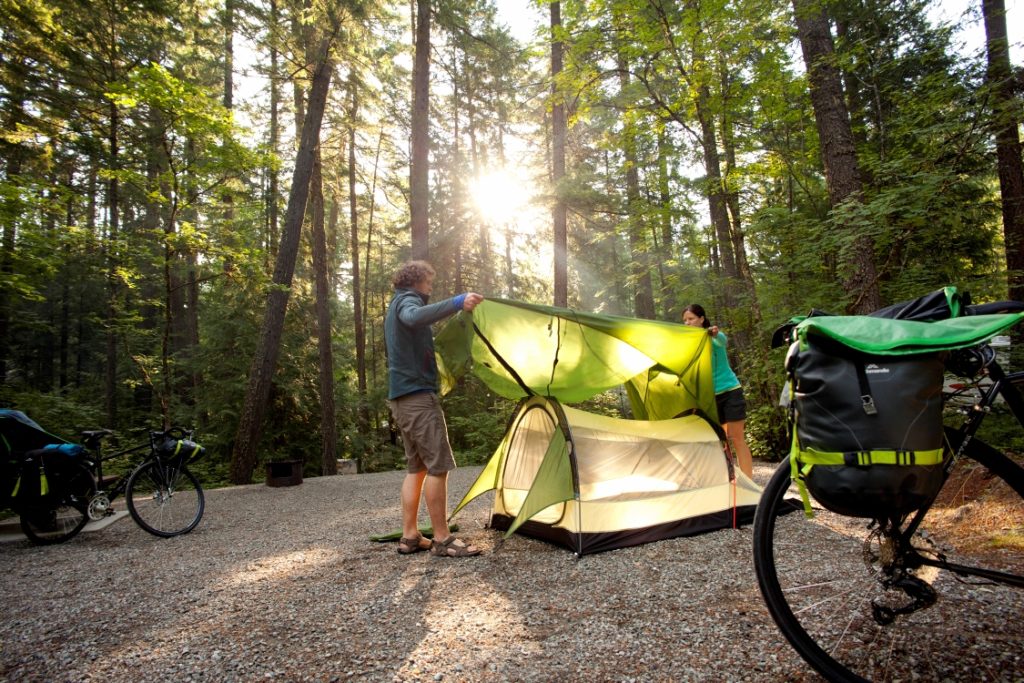
Walk-in and cycle-in camping takes a little bit more planning. Photo: Julian Apse
backcountry camping: Camping in an area that is not frontcountry. This involves wilderness hiking and backpacking where limited facilities are available.
cabin camping: Backcountry areas that offer cabin accommodation. Many require hiking and backpacking to reach them, and some can be booked in advance.
pack in/pack out (a.k.a. no trace camping): In areas where no garbage facilities exist (primarily in the backcountry), you must take with you everything you bring into the area.
bear cache: A storage container designed to protect your food from bears and other animals. This may be a metal box, canister, wooden structure, or a hanging system. Always be prepared to create your own if nothing is available.
potable water: Water available in camp areas that is safe to drink or use for food prep.
outhouse: A pit toilet often found in backcountry or wilderness camping areas.
spork: A handy utensil that is a combination fork and spoon.
s’more: A delicacy made from graham crackers, marshmallows, and chocolate. A camping must.
Now that you have a few tips and tricks, it’s time to go camping. Remember to have fun out there in the wilderness—it’s a pretty great place.


